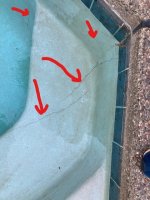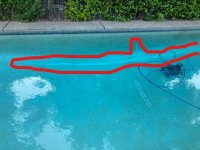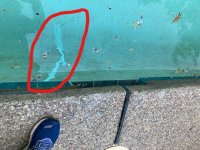We're getting bids on replastering and there are cracks in the plaster that might be structural issues. Each company who has given a bid has different opinions and ways to repair the possible structure cracks, costing different amounts, and none of them include any warranty on the crack repair work. I'm trying to find a structural engineer now to assess it and give advice. Have you had the same experience? No warranty on crack repairs?
We have no idea if there are structural cracks - it might be the plaster itself. Some cracks are very long and straight (20') but they're all hairline width. Others are not as long, in several parts of the pool. We don't think they're leaking and none have stained the plaster. We were told that if there is a leak that is deep the plaster would get stains from rusting of the rebar or ? but the plaster is white.
All bidders say they can't know until the plaster is removed if there are structural issues, or how bad they are, but their bids describe their solution to the worst-case scenario: either 1. cut a trench to the soil and put in new rebar and gunite or concrete, or 2. cut a V shape into the crack and fill with a compound, or 3. fill the cracks with a pressurized fluid that hardens.
But by the time the plaster is removed we've already hired the company and $$$$ into the project. If the crack repair isn't warrantied, how can we choose? Maybe a structural engineer will help with the decision. Or maybe the structural engineer won't know either until the plaster is removed!?
We have no idea if there are structural cracks - it might be the plaster itself. Some cracks are very long and straight (20') but they're all hairline width. Others are not as long, in several parts of the pool. We don't think they're leaking and none have stained the plaster. We were told that if there is a leak that is deep the plaster would get stains from rusting of the rebar or ? but the plaster is white.
All bidders say they can't know until the plaster is removed if there are structural issues, or how bad they are, but their bids describe their solution to the worst-case scenario: either 1. cut a trench to the soil and put in new rebar and gunite or concrete, or 2. cut a V shape into the crack and fill with a compound, or 3. fill the cracks with a pressurized fluid that hardens.
But by the time the plaster is removed we've already hired the company and $$$$ into the project. If the crack repair isn't warrantied, how can we choose? Maybe a structural engineer will help with the decision. Or maybe the structural engineer won't know either until the plaster is removed!?




